Local Development on AKS with mirrord
Hi everyone,
The awesome team at Metalbear recently shared an insightful blog post showcasing how to use mirrord with Azure Kubernetes Service. I’m excited to highlight their work, as the blog dives deep into how mirrord simplifies testing your code directly in a Kubernetes environment. Happy reading!
DISCLAIMER. The following blog is authored by MetalBear at the request of Microsoft. Microsoft is publishing this blog in the AKS Engineering Blog as a convenience to its readers.
Quentin Petraroia - Product Manager for Azure Kubernetes Service
Introduction
Developing applications for Kubernetes can mean a lot of time spent waiting and relatively little time spent writing code. Whenever you want to test your code changes in the cluster, you usually have to build your application, deploy it to the cluster, and attach a remote debugger (or add a bunch of logs). These iterations can be incredibly time-consuming. Thankfully, there is a way to bridge the gap between your local environment and a remote cluster, making them feel seamlessly connected. mirrord, which can be used as a plugin for VSCode or IntelliJ or directly in the CLI, is an open-source tool that does exactly that (and much more).
Tools like this (dubbed “remocal” development tools) are designed to improve your experience when developing applications intended to be deployed in a cluster. The point of mirrord is to shift left on cloud testing and shorten the dev loop from hours to seconds. It’s the kind of thing you set up once and then can’t imagine living without because it feels like magic.
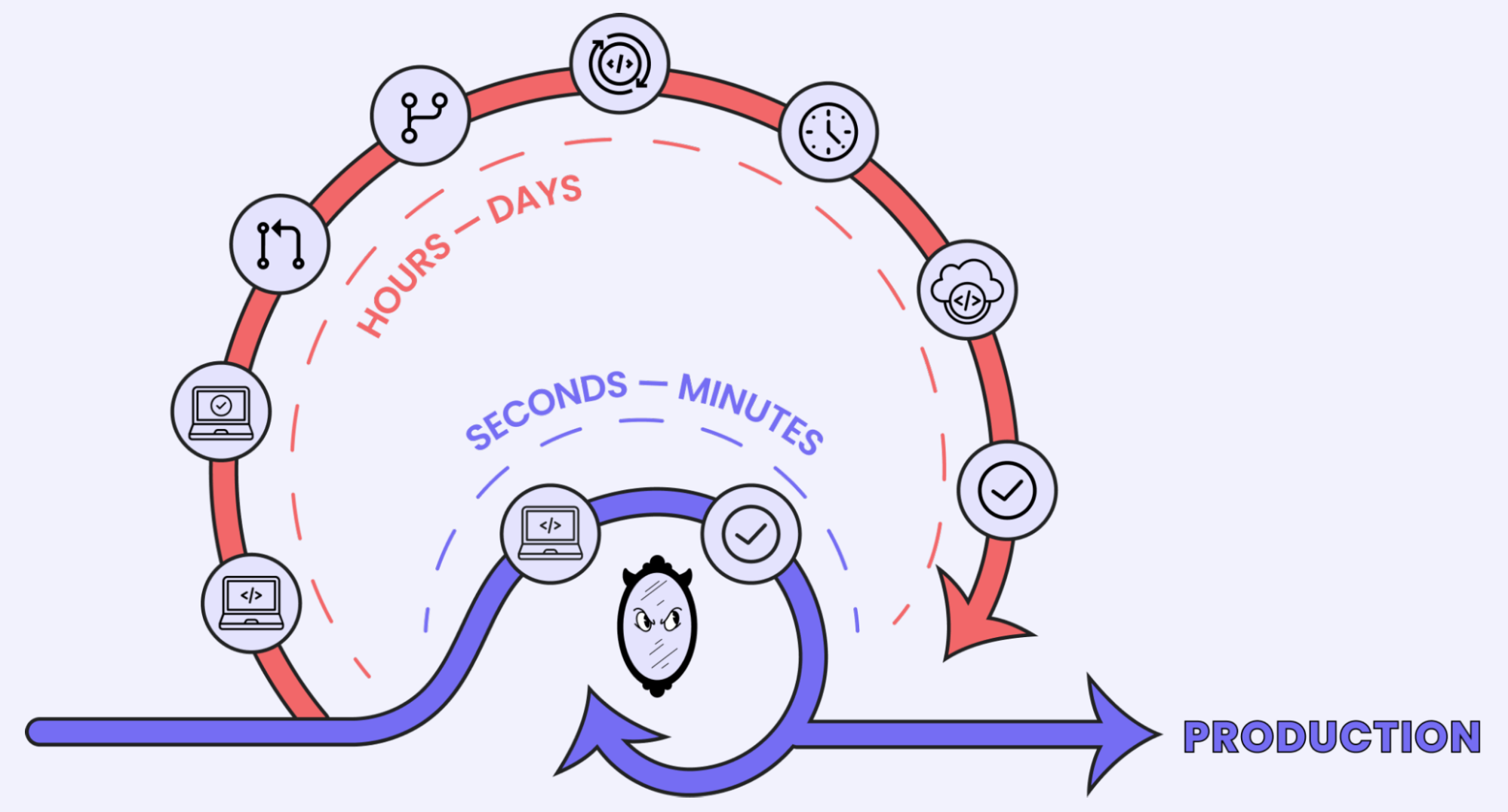
In short, mirrord lets you connect your local process with your development or staging cluster. It grabs env vars, files and traffic from the cluster in a way that makes your process think it’s running remotely. The approach of mirrord is unique in that instead of simply starting a VPN, it hooks system calls in the local process and proxies traffic to the cluster.
mirrord is also highly configurable, allowing for very granular specification of exactly what comes from the cluster and what comes from the local environment. Additionally, mirrord is easy to use with any kind of cluster configuration, no matter what service meshes or other more complex architecture it uses. It works just as well regardless of the size and shape of your cluster.
Some other pros of using mirrord over similar solutions include:
- no root privileges are required on your machine
- super fast start up speed
- you can run multiple local processes at the same time
Using mirrord with AKS
mirrord is cloud agnostic and seamlessly supports AKS. Additionally, the setup process is exceedingly simple: as long as you can access your cluster with kubectl, you can run mirrord and start developing with a lightning fast feedback loop.
Next up are a couple of walkthroughs for using the mirrord VSCode plugin to develop parts of the AKS store demo sample; the first example looks at product-service, a Rust application, and the second looks at makeline-service, which is written in Go. Feel free to try both or whichever one interests you more. They are completely independent of each other, but I would recommend reading the Rust example even if you only want to follow the Go walkthrough.
A practical example: Rust
And now for a guide on how to start using mirrord for yourself, using the AKS store demo sample. You’ll need the following:
- An AKS cluster with the store demo deployed (you can use either the full deployment or the reduced one from
aks-store-quickstart.yamlfor this example), accessible from your machine withkubectl - Rust (I prefer to install the Rust compiler using Rustup)
- A local clone of the store demo
First, deploy the store demo - the easiest way to deploy the reduced sample is by running kubectl apply -f aks-store-quickstart.yaml from the store demo directory. Make sure all pods are in Ready state, then open the product-service folder in VSCode.
You’ll also want to open the store front in a browser. The following command prints the IP:
kubectl get service store-front --output 'jsonpath={..status.loadBalancer.ingress[0].ip}'
You should see the store UI before it’s been affected by any of our local changes.
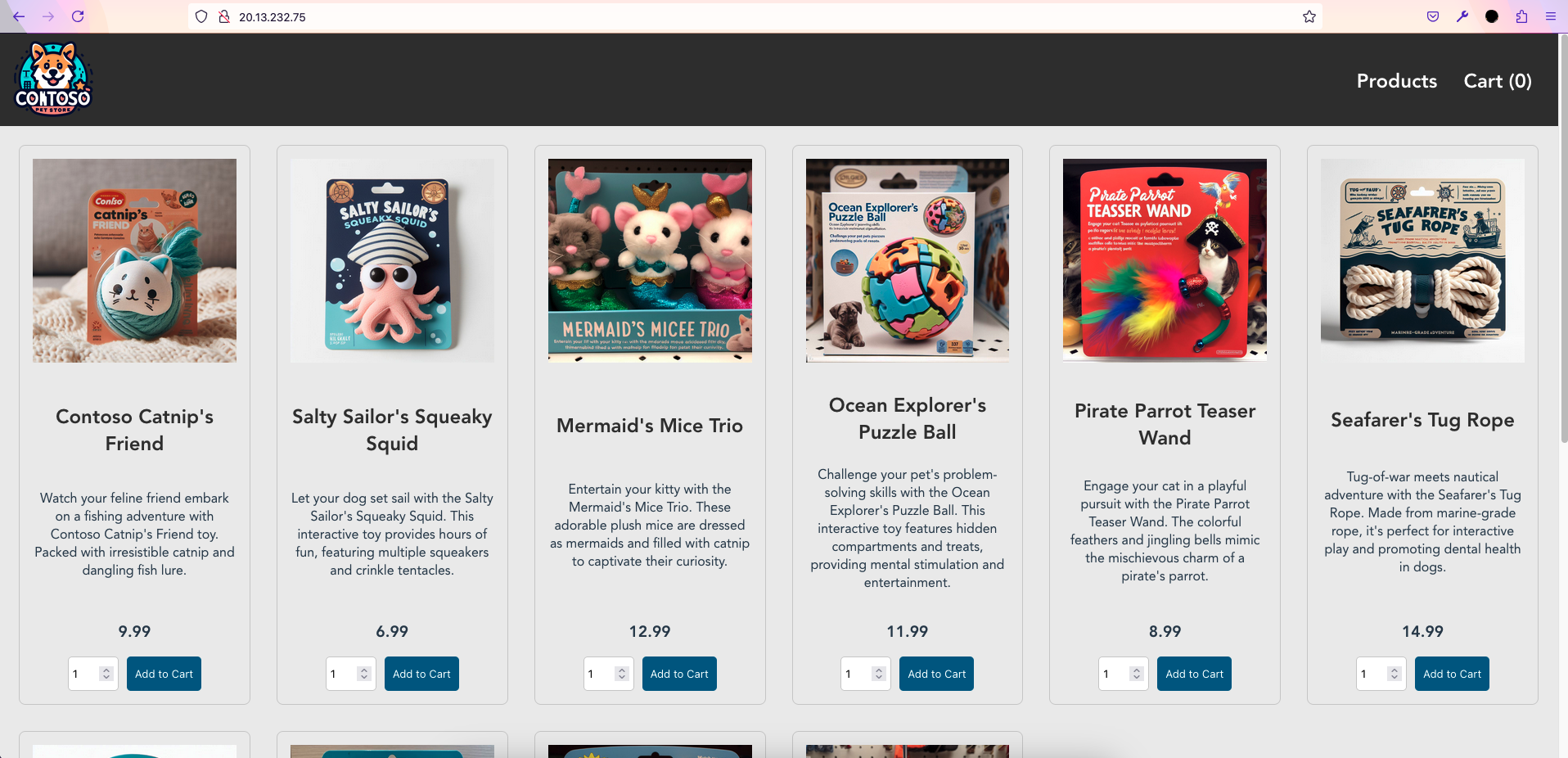
Next is installing mirrord: search for “mirrord” in the VSCode extensions tab (or find it here) and install it - a mirrord status icon should show up on the bottom bar of the IDE. Click it once so the circle next to “mirrord” is filled (this means it’s enabled).
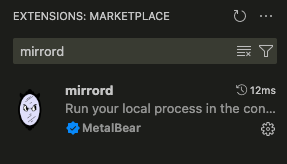

As a quick sanity check, hit F5 to run product-service in debug mode (if it asks, let VSCode generate run configurations from Cargo.toml and use the configuration called “Debug executable ‘product-service’”). mirrord will ask which target to use (that is, the pod or deployment whose traffic, files, and other input and output mirrord should proxy to your local process), so choose the pod from the product-service deployment. When you refresh the store front UI in your browser, you should see incoming traffic to product-service in the cluster printing out in the terminal.

Nice! We’re mirroring the traffic coming into the target on the cluster to our local process and all we had to do was download a plugin. This doesn’t affect the cluster because mirroring traffic is non-intrusive - requests are handled by the remote pod, and any response we send from our local process is discarded. Now let’s get intrusive and change the details of some of our products. Stop the debugger so we don’t have to look at constant log spam.
The details of all the products available in our store are stored in src/data.rs. Let’s say that we want to change some of the product details to target high-income pet owners specifically: go ahead and replace the first three products (lines 6-26) of that file with the following:
Product {
id: 1,
name: "Premium Contoso Catnip's Friend".to_string(),
price: 19.99,
description: "Watch your feline friend embark on a fishing adventure with Premium Contoso Catnip's Friend toy. Packed with premium irresistible catnip and premium dangling fish lure.".to_string(),
image: "/catnip.jpg".to_string()
},
Product {
id: 2,
name: "Premium Salty Sailor's Squeaky Squid".to_string(),
price: 16.99,
description: "Let your dog set sail (premium-ly) with the Premium Salty Sailor's Squeaky Squid. This interactive toy provides hours of fun, featuring multiple squeakers and crinkle tentacles.".to_string(),
image: "/squid.jpg".to_string()
},
Product {
id: 3,
name: "Premium Mermaid's Mice Trio".to_string(),
price: 112.99,
description: "Entertain your premium kitty with the Mermaid's Mice Trio. These adorable plush premium mice are dressed as mermaids and filled with catnip to captivate their curiosity.".to_string(),
image: "/mermaid.jpg".to_string()
},
In order to configure mirrord, hover over the plugin name in the toolbar and click “Settings”, which will create a mirrord.json file with some default configuration values. You can see the default network mode is “mirror” - change that to “steal” so that we can intercept traffic to our local process and return traffic from the local process into the cluster. If you only want to steal a subset of the traffic you can use filtered stealing, which only intercepts traffic matching a preconfigured filter - you can read more about this in the docs.
While we have the settings open, let’s specify our target so we don’t have to keep selecting it in the GUI. Under the "feature" field, add: "target": "deployment/product-service". The full mirrord.json now looks like this:
{
"feature": {
"network": {
"incoming": "mirror",
"outgoing": true
},
"fs": "read",
"env": true
},
"target": "deployment/product-service"
}
This time, when you refresh the store front, you’ll see that the product details have changed in line with our local version of product-service.
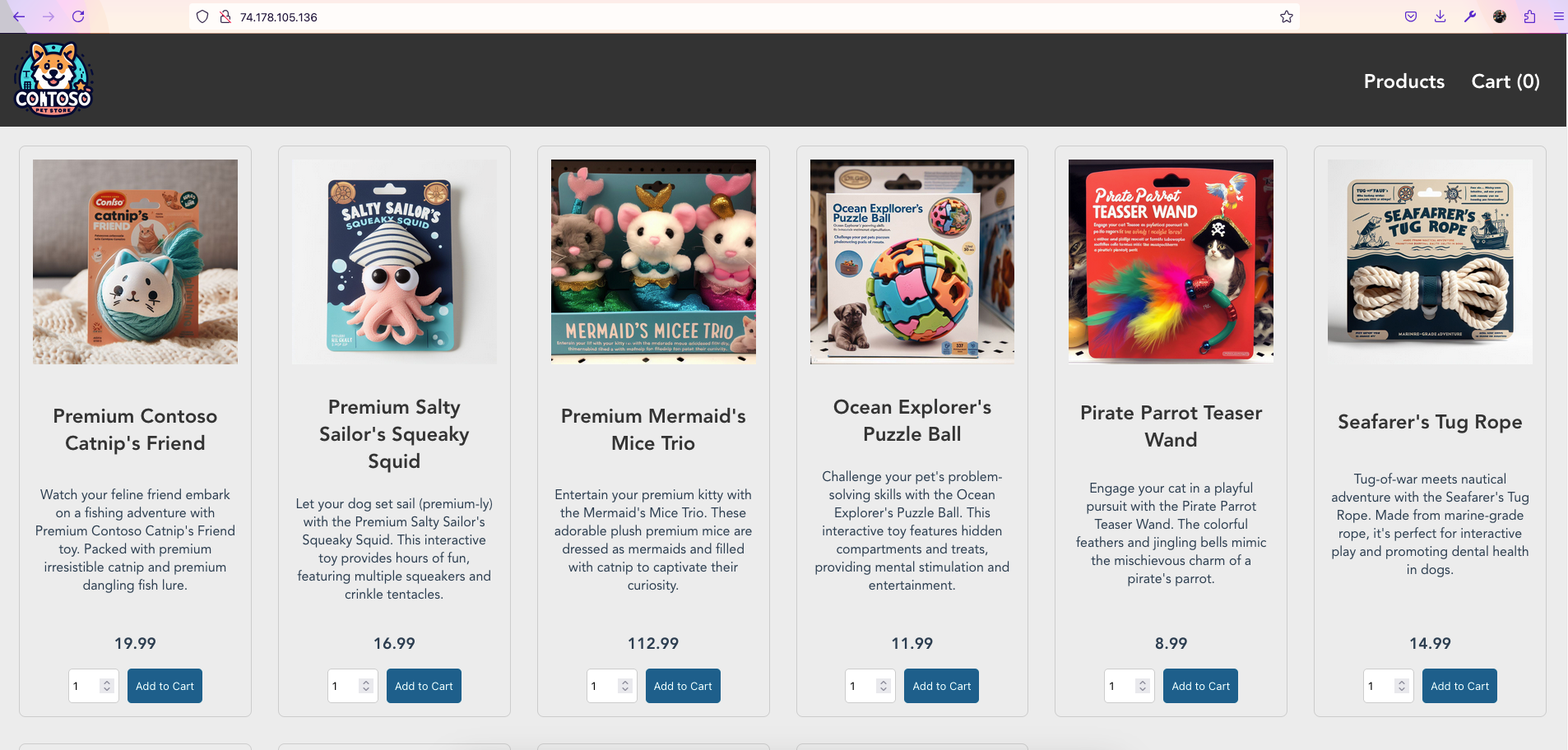
When the store-front app in the cluster sent a request to get the product details, mirrord stole the request and sent it to our local version, which sent a response containing our changes that was then sent back to the store front in the cluster through mirrord, showing up on the webpage.
A(nother) practical example: Golang
Let’s have a look at a service that does something more complicated: makeline-service is the component that communicates with the store-admin, the RabbitMQ order queue, and the MongoDB order database in order to process and complete orders.
You’ll need:
- An AKS cluster with the store demo deployed (you’ll need the full deployment from
aks-store-all-in-one.yamlfor this one), accessible from your machine withkubectl - Go (available from their website)
- A local clone of the store demo
Open makeline-service in VSCode and make sure mirrord is enabled (refer to the Rust example for instructions). Next, open mirrord’s configuration by hovering over the mirrord status icon in the bottom bar and clicking “Settings”. Replace the contents of the mirrord.json file that was created with the following:
{
"feature": {
"network": {
"incoming": "steal",
"outgoing": true
},
"fs": "read",
"env": true
},
"target": "deployment/makeline-service"
}
Keep the store-admin page open so that we can track orders (grab the IP with kubectl get service store-admin --output 'jsonpath={..status.loadBalancer.ingress[0].ip}') and make sure that new orders are being placed:
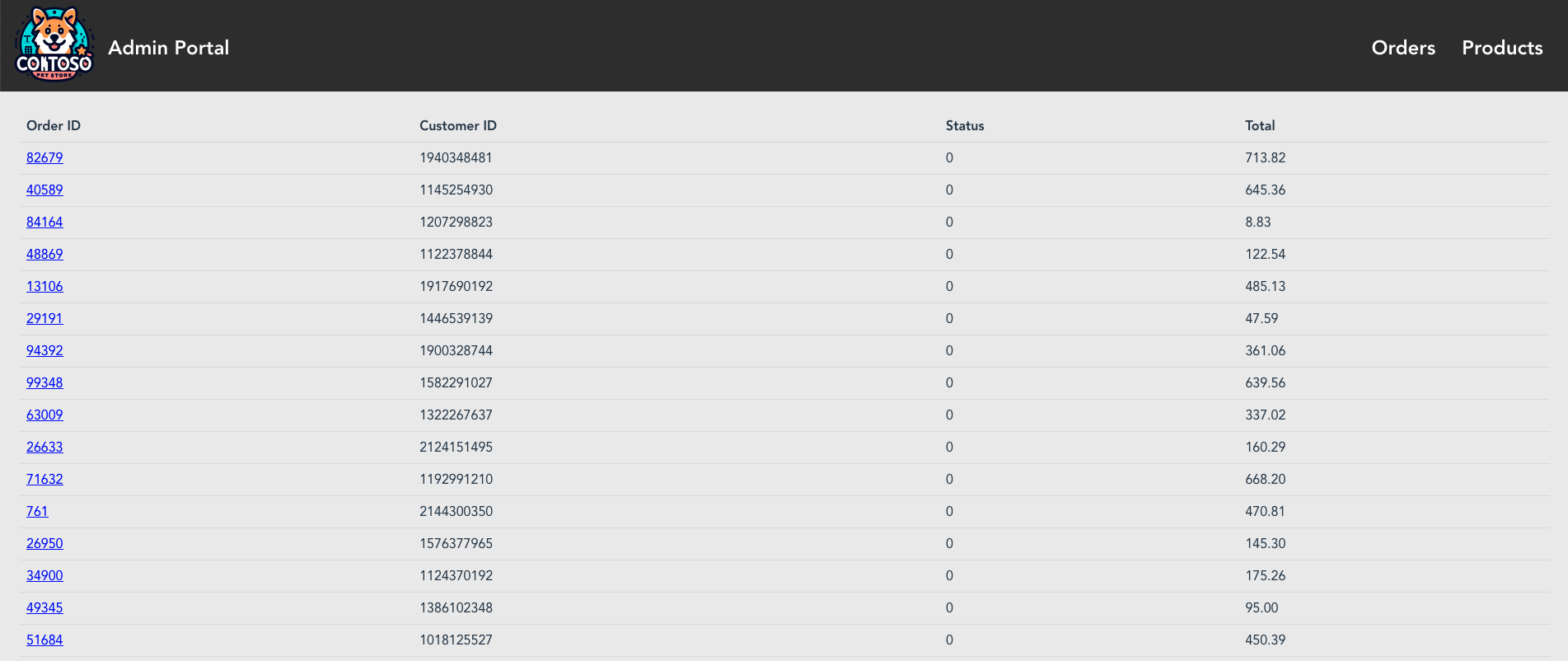
Say, for example, that you have had a genius new idea regarding order spam detection: you want to try discarding orders in the queue that contain more than one type of item.
Clicking on some of the orders, you can see that they’re a random collection of usually a few different types of item, like this (note that orders are created in a way such that some will have multiple entries for the same kind of item - we think these are spam too, and we only want to process orders with a single item entry):

We don’t want these, they’re (possibly) spam! Change the contents of main.go as follows: replace lines 77-78 with this code for our new anti-spam measure:
// NEW: Discard orders containing more than 1 different type of item
var new_orders []Order
for _, order := range orders {
if len(order.Items) <= 1 {
new_orders = append(new_orders, order)
}
}
// Save orders to database
err = client.repo.InsertOrders(new_orders)
Re-run the debugger, refresh the store-admin page and check for new orders - they should all be orders with only one type of item, which you can check by clicking on the order number:

Much better. This means that mirrord not only stole traffic for the makeline-service deployment - it also read messages from RabbitMQ and wrote new entries to MongoDB, all without messing around with configuration and credentials! It can do this because by targeting the makeline-service pod, it reads the environment variables and files from that pod in the cluster.
Summary / Further Reading
In summary: if you’re looking for a tool to make developing and testing Kubernetes applications easier (and faster), then give mirrord a try - it’s easy and free to start using, simple to configure and powerful enough to work well with large and complex clusters. Even though the examples here are simple, mirrord has the potential to completely transform how you work on a day-to-day basis.
Of course, this post only scratches the surface of what mirrord can do. You can run it in a container, you can use it for port-forwarding to the cluster (or in reverse from the cluster), you can split Kafka and SQS queues, and so on and so forth. Stay updated on the latest features through the MetalBear blog or dive straight into the mirrord docs to get started. Have questions? Join our friendly Discord server and say hello! For additional guidance on getting started with AKS, don’t forget to check out the AKS documentation.